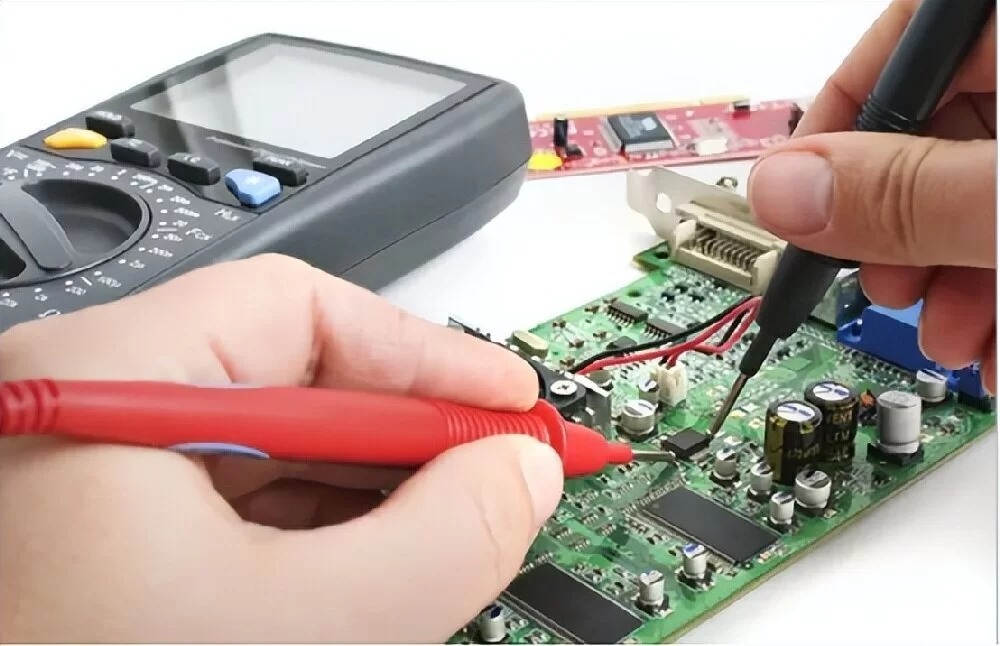Electronic PCB Repair is at the heart of maintaining and producing modern electronic devices. As electronics become more integrated into daily life, the complexity and frequency of circuit board failures have increased.Mastering effective circuit board repair is essential for engineers to ensure the longevity and functionality of electronic devices.
Printed Circuit Board Repair involves more than just the physical act of soldering or replacing components. It requires a deep understanding of the circuit board's design and the electronic principles that govern its operation.Modern PCBs are often multilayered, containing complex circuitry that requires careful analysis and diagnostic techniques to identify faults. Advanced tools such as oscilloscopes, multimeters, and thermal cameras are often used to diagnose issues, while X-ray imaging and other non-invasive methods can be crucial for identifying problems in multi-layer boards without causing additional damage.

Circuit board repair also demands a high level of precision, especially when working with miniaturized components. As electronic devices shrink in size, the components on the PCB become smaller and more densely packed. This miniaturization means that even the smallest mistake during repair—such as excessive heat application, incorrect soldering techniques, or improper handling—can render the board unusable. Technicians must be well-versed in using temperature-controlled soldering irons, reflow ovens, and desoldering tools to avoid damaging sensitive components. Printed Circuit Board Repair has become more challenging with the advent of Surface-Mount Technology (SMT), where components are mounted directly onto the surface of the PCB rather than through holes. SMT components are typically smaller and more difficult to handle than traditional through-hole components, requiring specialized equipment and techniques for both the assembly and repair processes. For instance, reflow soldering is often used to attach SMT components, while infrared and hot air rework stations are employed to remove and replace them during repairs.
Circuit board repair is further complicated by the trend toward higher component integration and reduced board space. With more components squeezed onto smaller PCBs, the margin for error during repair is minimized.High-density interconnect (HDI) technology, which involves the use of finer traces, vias, and pads, further complicates the repair process. To address these challenges, technicians must not only rely on their manual dexterity but also on sophisticated diagnostic and repair equipment. Automated Optical Inspection (AOI) and Automated X-ray Inspection (AXI) systems are becoming indispensable tools in detecting faults that are invisible to the naked eye. As the electronics industry moves towards more advanced and compact designs, the role of printed circuit board repair has never been more critical. Repairing rather than replacing faulty PCBs is both cost-effective and environmentally responsible, reducing the amount of electronic waste generated. Moreover, the ability to circuit board repair supports the growing trend toward a circular economy, where resources are conserved through reuse and recycling.
Circuit board repair is likely to evolve with the introduction of AI and machine learning technologies. These technologies are already being used in diagnostic tools that can automatically detect and suggest repairs for PCB faults. AI-driven systems can analyze complex circuits, recognize patterns of failure, and even predict potential issues before they occur, making the repair process faster and more reliable. Furthermore,printed circuit board repair often involves reprogramming or replacing firmware in cases where the issue is not just hardware-related. Firmware updates can correct software bugs that affect the performance of the PCB, and sometimes, reprogramming a microcontroller can bring a "dead" board back to life. This aspect of repair requires a good understanding of both hardware and software, as well as the tools necessary for flashing firmware.
Additionally, as the demand for printed circuit board repair grows, so does the need for specialized training and certification. Technicians must stay up-to-date with the latest repair techniques and technologies, as well as the evolving standards in PCB design and manufacturing. Educational institutions and industry organizations are increasingly offering courses and certifications in PCB repair, ensuring that technicians are equipped with the skills needed to meet the challenges of modern electronics.
In conclusion,circuit board repair is a vital skill in the electronics industry, essential for maintaining the reliability and functionality of electronic devices. As technology continues to advance, the importance of skilled printed circuit board repair technicians will only increase. By embracing new technologies and techniques, the industry can ensure that devices are not only repaired efficiently but also restored to their original performance, contributing to a more sustainable and technologically advanced world.